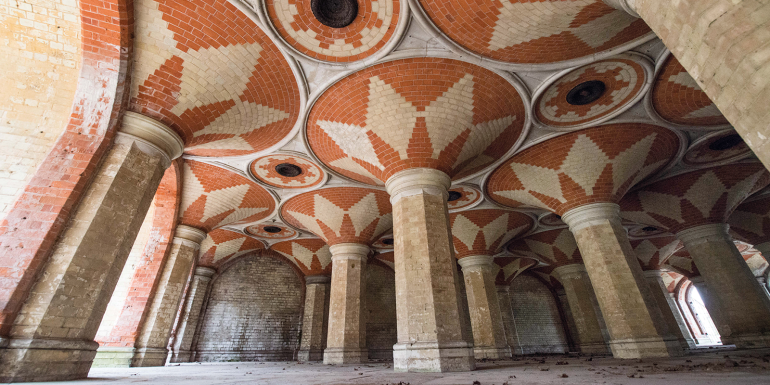Restoring the Crystal Palace Subway

Heritage contractors will undertake restoration work on the historic Crystal Palace Subway, the only remaining structure from a bygone beauty
The Crystal Palace Subway was built to run under the road between the Crystal Palace and the nearby high-level railway station. The grand columned subway was for first-class passengers, and featured a glass-roofed atrium and four sets of grand staircases to the famous Palace above, with two for arrivals at the station and two for departures.
First opened to the public in 1865, the subway was originally designed by Charles Barry Jnr. The main structure of the subway is a series of spectacular vaults built from red and cream brick, with an elaborate floor paved in two alternating types of stone.
In 1936, the Crystal Palace was famously destroyed by fire; as a result, the subway is one of the last remaining features of the original building. It has an international following, and the dedicated Friends of Crystal Palace Subway (FCPS) group, who have worked for many years to secure the future of the site.
It is partially located under Crystal Palace Parade, situated on the edge of Crystal Palace Park and forms part of the council’s wider regeneration plan to restore and rejuvenate the park. The restoration of this structure will ultimately remove the subway from Historic England’s Heritage at Risk Register by summer 2022, making the site safe for future generations to enjoy.
The restoration work, estimated at £3.2m, on the Grade II listed subway will include rebuilding existing walls and the construction of a new roof over the courtyard. Significantly, the project will see the repair of the Victorian subway, including the rebuilding of existing walls, construction of new parapet walls and a roof structure. The proposed new roof will be visible from Crystal Palace Parade, with the subway exterior being made from glass and stainless steel and the gable enclosed with Corten steel.

The design has been created by award winning conservation architects Thomas Ford & Partners, who took inspiration from the original structure while ensuring the restored subway would meet modern needs. The planned new roof over the east courtyard will replace the roof that was lost in the years following the great fire of 1936. So far, survey work has been undertaken and the site has been cleared of vegetation. The clearance uncovered the remains of the subway’s south staircase, which has been inaccessible since the early 1900s.
Work in the East Courtyard is due to start in August 2022; it’s expected that the new roof structure will be constructed between October 2022 and January 2023, with the work reaching completion in the spring of 2023. The contract to restore the subway was awarded to DBR, a specialist heritage contractor. The estimated £3.2m cost of restoring the subway follows successful grant allocations of £2.34m from the City of London Strategic Investment Pot and an additional £639,000 from Historic England. Contributions to the work are also coming from the FCPS.

Timeline of work
2016 Following two years of fundraising by the FCPS, a new access to the subway was created via the entrance within the London Borough of Southwark’s boundary. A remarkable £52,000 was raised, enabling over 22,000 people to visit between 2016 and 2020.
2016/2017 Water ingress to the subway risked damaging the structure. In an attempt to repair damage caused to the subway’s roof by excess water penetration, a trial waterproofing exercise was undertaken in 2016. However, this was deemed ineffective and alternative methods will be used during further restoration work.
2018 The west courtyard located within Southwark’s boundary was repaired, refurbished and resurfaced.
2019 Two retaining walls were installed behind the subway’s east courtyard to improve the integrity of the Crystal Palace Parade.
Taken from bit.ly/CPSrestoration
Find out more at the FCPS website at cpsubway.org.uk/history.
View more of DBR’s work at dbrlimited.com
Image credit | Getty










